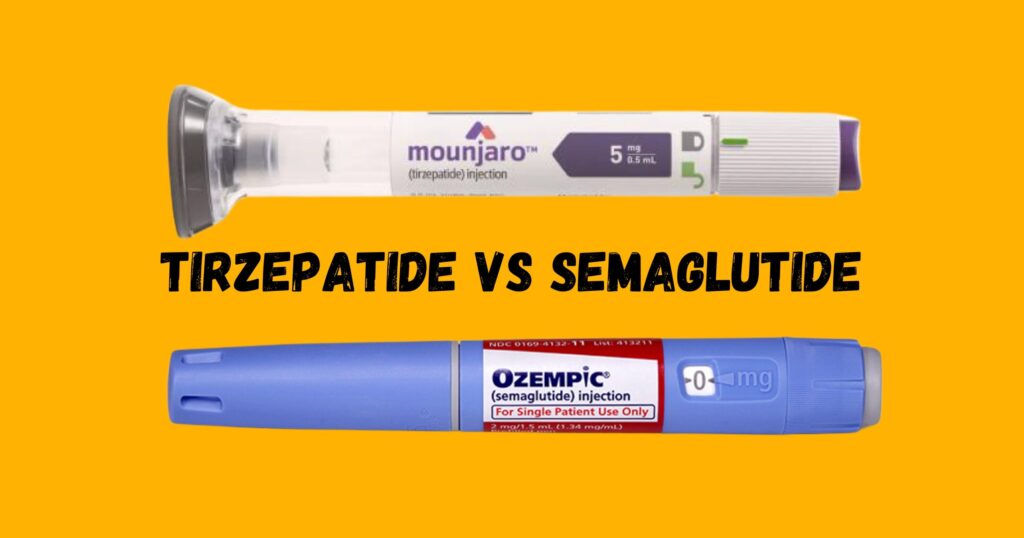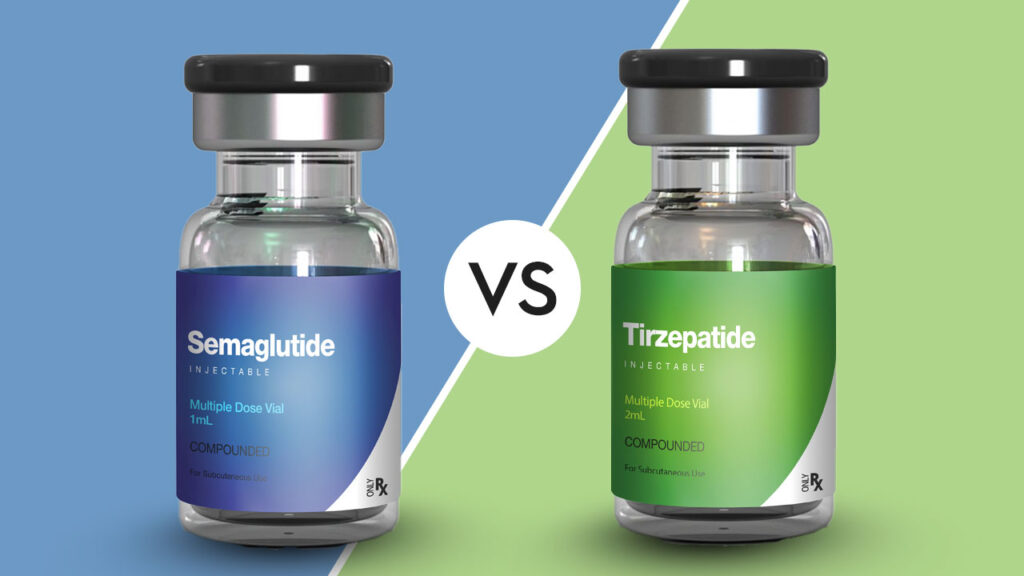With obesity impacting lives globally, scientists pursue medications that might complement nutrition and fitness efforts targeting weight loss.
Recently approved injections like difference between semaglutide and tirzepatide therapies represent key examples under investigation.
As GLP-1 receptor agonists, these compounds influence appetite signaling and other biological pathways tied to dietary intake and body weight regulation. However, their underlying methods of action differ notably.
We’ll break down in simple terms how semaglutide versus tirzepatide support weight loss at a high level, so you can better understand each option.
But always consult your own doctor before considering any prescription intervention based on your health profile and goals.
How Semaglutide Aids Weight Loss?
Sold under the names Ozempic, Rybelsus and Wegovy, semaglutide mimics the hunger-reducing hormone GLP-1 to curb appetite. Key effects assisting potential weight reduction include:
- Slows digestion extending feelings of fullness
- Reduces calorie intake lowering desire for food consumption
- Modestly elevates energy expenditure
In clinical studies, participants lost on average 12-15% of baseline body weight over roughly a year on semaglutide. However, clear diet and exercise compliance provided simultaneously.
Common but usually manageable side effects like nausea, vomiting, diarrhea or constipation can occur.
More seriously, semaglutide may increase thyroid cancer risk with extended durations based on animal studies.

How Tirzepatide Aids Weight Loss?
More recently in development, tirzepatide also activates GLP-1 receptors but with greater amplification potential thanks to added glucose-dependent insulinotropic polypeptide (GIP) agonism too. Effects include:
- Curbs appetite signals to reduce caloric intake more substantially
- Pauses stomach emptying and extends feelings of fullness longer
- Potentially assists fat browning and energy expenditure processes
Across trials, participants lost approximately 22% of their starting weight over a year combining tirzepatide with nutrition and fitness support.
Some gastrointestinal issues again occur, although potential thyroid tumor risks appear lower thus far.
In 2022, the FDA approved tirzepatide medication Mounjaro building on these promising obesity and blood sugar management results. But real-world evidence continues accumulating.
Again, please consult your doctor before considering any type of prescription weight or diabetes medication.
Account for your full health profile including risks given the limited long term data still surrounding emerging options like tirzepatide. Lifestyle remains crucial too!
Frequently Asked Questions
Do semaglutide and tirzepatide help lower A1C levels?
Yes, in addition to the weight loss effects, both medications have demonstrated A1C reductions in the 0.6 to 1.6% range in people with type 2 diabetes when combined with other glucose-lowering medications. This shows a positive impact on blood sugar management.
What are common side effects of semaglutide and tirzepatide?
As with most medications, semaglutide and tirzepatide can cause certain gastrointestinal side effects. Most commonly this includes nausea, vomiting, diarrhea and constipation. These tend to occur more frequently when starting treatment and improve over the first 12 weeks on average.
Can I take Ozempic and Wegovy together?
No, semaglutide medications like Ozempic and Wegovy should not be taken together. They contain the same active ingredient at different doses. Taking them together could increase side effects without providing extra benefit.
Is tirzepatide approved for use to treat type 1 diabetes?
No, currently tirzepatide is only FDA approved to treat type 2 diabetes and chronic weight management in adults. It does not have approvals for use in type 1 diabetes cases yet, although future expanded indications remain possible with more ongoing study.


